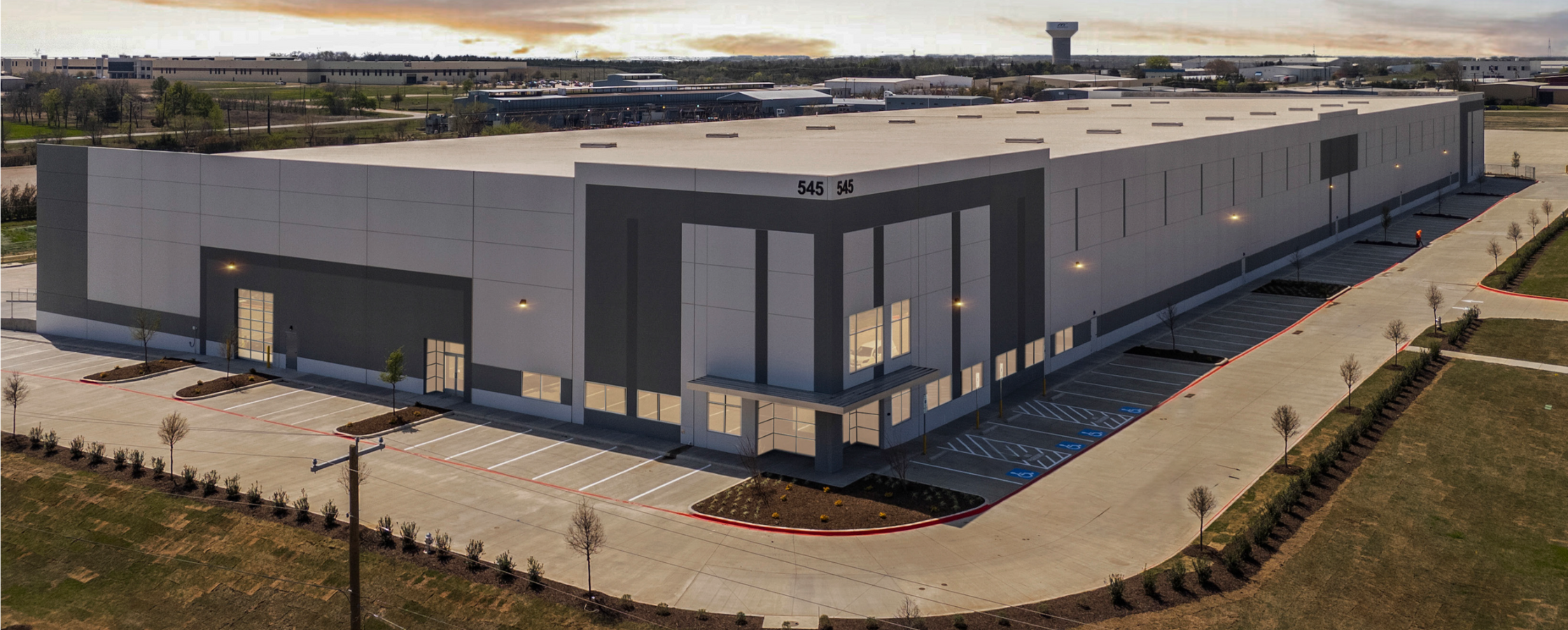Peachtree通过新泽西州酒店产品扩展无债务夏令时平台,为1031名交易所投资者提供支持

亚特兰大(2025 年 5 月 2 日) -拥有数十亿美元股权和债务投资组合的领先商业房地产投资公司Peachtree Group已推出其最新的酒店物业,即位于新泽西州泽西海岸沿线的特拉华州法定信托(DST),即拥有114间客房的Residence Inn Ocean Township,这是Peachtree自2022年启动该计划以来第八次夏令时发行。
”这座新开发的房产代表了我们在夏令时产品、强劲的市场基本面、领先的长期居留品牌以及受长期旅游利好推动的长期上行空间方面所寻求的一切,” Peachtree1031交易所/夏令时产品总裁蒂姆·威特说。
海洋镇住宅酒店位于蒙茅斯县,这是美国最富有的县之一,以其高中位收入和充满活力的全年经济而闻名。该酒店靠近阿斯伯里公园、朗布兰奇和桑迪胡克等热门海滩目的地,可满足稳定的休闲需求。该地区的多元化经济以医疗保健、教育和技术为支撑,推动了全年持续的住宿需求。展望未来,Netflix正在投资9亿美元,将附近的蒙茅斯堡重建为其主要的东海岸制作中心,该项目预计将创造3500个建筑工作岗位和1,500个长期工作岗位,并进一步提振酒店需求。
“随着海洋镇公寓式酒店于2024年开业,我们将为投资者提供在主要沿海市场获得无债创收资产的机会。对于通过1031交易所寻求延期纳税,同时保持商业房地产中最具弹性的行业之一的风险敞口的投资者来说,这是一个战略选择,” 威特说。
Peachtree的夏令时房产为1031名交易所投资者提供了一个引人注目的选择,他们希望将出售增值房地产的收益进行再投资,同时延期税收和保持酒店业敞口。该公司的八项夏令时产品总计超过2.2亿美元的无债务房地产交易,每笔交易都符合Peachtree的核心战略,即在高增长市场收购知名酒店品牌,寻求增值机会,并利用经验丰富的酒店管理团队来推动长期业绩和价值创造。
Peachtree继续与1031交易所的核心原则保持一致,为投资者提供了一条无缝且节税的途径,将资本收益转化为被动创收的房地产投资。
证券发行由Peachtree PC Investors, LLC发行,其成员:FINRA/SIPC。本公告不构成购买证券的要约。夏令时利息缺乏流动性,具有投机性,涉及高风险。潜在投资者应就对夏令时税权益的投资以及他、她或其根据第1031条进行的交易是否符合其、她或其具体情况的资格与其自己的税务顾问进行协商。
相关 帖子

This content is adapted from a Bisnow National Opportunity Zones Digital Summit panel moderated by Greg Friedman, CEO of Peachtree Group, featuring Matt Peurach, Partner at Seyfarth Shaw, and Michael Torhan, Tax Partner at EisnerAmper.
The Opportunity Zones program is entering a transformative phase. With OZ 2.0 making the program permanent and introducing enhanced incentives for rural investments, sophisticated investors need to understand how these changes impact both existing holdings and future deployment strategies.
The 2026 Valuation Challenge
For investors who deployed capital into OZ 1.0 funds, December 31, 2026, deferral deadline is approaching rapidly. This creates a critical planning imperative around asset valuation.
"When the deferral period is up, you're paying tax on the lesser of the amount that you put into the OZ fund or the fair market value of your interest on December 31, 2026," explains Matt Peurach. Given commercial real estate valuations have declined approximately 20% on average since 2021, many investors may benefit from establishing current fair market values through formal appraisals.
Michael Torhan emphasizes the importance of documentation: "Fair market value throughout the tax code and throughout case law is generally what would a buyer and seller be willing to exchange for. Obviously, if the asset is still being held, you would want to get some kind of appraisal, some valuation report, really to support that number, to support the tax reporting position."
OZ 2.0 Creates Permanent Framework
The most significant change under OZ 2.0 is permanency. Rather than a fixed endpoint, the program now offers rolling five-year deferral periods for new investments beginning in 2027.
"Under OZ 2.0, you've got a fixed five-year rolling deferral period. So, it kind of doesn't matter from that perspective when you're putting your gains into the OZ fund, you get to defer it for five years," notes Pierock. This structural change eliminates the diminishing returns problem that plagued late-stage OZ 1.0 investments.
Additionally, new Qualified Rural Opportunity Funds offer supercharged benefits. Investments in designated rural zones qualify for a 30% discount on deferred gains versus the standard 10%, along with relaxed substantial improvement requirements. The new rural zone maps will be released in July 2026, creating strategic opportunities for investors who can position assets in advance.
Strategic Considerations for 2025-2026
The transition period between OZ 1.0 and OZ 2.0 presents unique challenges. Investors realizing capital gains today face a compressed timeline, as Pierock points out: "If I'm a taxpayer that realized a capital gain and I'm interested in pursuing a tax mitigation strategy for that and I want to do an opportunity zone investment, number one, I only have one 180 day period to put my gain into an OZ fund."
Furthermore, zone redesignations every 10 years under OZ 2.0 introduce new uncertainty. Projects currently in development within existing zones may face questions about grandfathering if their zone loses designation. While guidance is expected, proactive engagement with state offices regarding zone designations becomes critical for developers with multi-year timelines.
For commercial real estate investors and developers, the message is clear: the Opportunity Zones program remains one of the most powerful tax incentives available, but maximizing benefits requires sophisticated structuring, proactive valuation planning, and close attention to the evolving regulatory framework.
Key Takeaways
- Valuation is Critical for OZ 1.0 Investors: With the December 31, 2026, deferral deadline approaching, investors should obtain professional appraisals to potentially reduce tax liability based on current fair market value versus original investment amount.
- OZ 2.0 Offers Enhanced Rural Benefits: New Qualified Rural Opportunity Funds provide 30% tax discounts (versus 10% standard) and relaxed compliance requirements, with designation maps releasing in July 2026.
- Strategic Timing Matters: The 180-day reinvestment window, combined with tightened poverty thresholds for new zone designations, means investors should carefully evaluate whether to deploy under OZ 1.0 or wait for OZ 2.0 benefits starting in 2027.
Listen to the full discussion on the Peachtree Point of View podcast for deeper insights into structuring Opportunity Zone investments, navigating state-level conformity issues, and capitalizing on the permanent OZ framework. To learn more about Opportunity Zones, read the article “Opportunity Zones 2.0: What Investors Need to Know About the New Tax Law (2025 Update)”. It summarizing a conversation between Greg Friedman and Jason Watkins, partner at Novogradac & Company and chair of the national Opportunity Zones working group.

Please note, this podcast does not provide legal or tax advice. Before investing in any tax-advantaged program, consult with your CPA or a tax attorney to ensure you are eligible to benefit from the program's tax advantages.

Roth IRA Conversions in Real Estate: Insights from Tim Witt
Roth IRA Conversions and Commercial Real Estate: Unlocking Tax-Free Growth
For many investors, tax efficiency is the overlooked multiplier of wealth. One powerful yet underutilized approach combines Roth IRA conversions with commercial real estate development investments, creating significant tax advantages through strategic timing.
In this episode of Peachtree Point of View, Greg Friedman, CEO of Peachtree Group, speaks with Tim Witt, leader of Peachtree's Delaware Statutory Trust (DST) program, about how Roth IRA conversions can unlock powerful tax-free growth when paired with commercial real estate strategies.
Two Paths to a Roth IRA
Direct Contributions: Investors with income below the limits can contribute up to $7,000 annually ($8,000 if age 50 or older) with after-tax dollars. These accounts grow tax-free, and withdrawals in retirement are also tax-free. Learn more about Roth IRAs directly from the IRS.
"The quickest way to multiply your wealth is through tax efficiency. Sometimes that gets missed as people are chasing returns." — Greg Friedman
Conversions for High Earners: For those with incomes above the threshold, direct contributions are not permitted. Instead, investors can use a Roth IRA conversion, often referred to as a "backdoor Roth," by transferring assets from a traditional IRA or a former employer's 401(k). Taxes are paid at the time of conversion, but from then on, all growth is tax-free.
The Commercial Real Estate Advantage
Tim Witt, who leads Peachtree Group's DST and tax strategy programs, explains how the conversion strategy works: "The key to doing this conversion is being able to transfer assets when they're at a lower value."
This approach leverages the natural "J-curve" pattern of development projects, where valuations temporarily decrease during construction phases.

The mechanics are straightforward but require precision. Investors place funds in a self-directed IRA and invest in commercial real estate development projects. Midway through construction, when projects typically show reduced valuations due to development costs, incomplete construction, and liquidity constraints, investors execute the Roth IRA conversion.
"That's when the value is going to return and hopefully far exceed the initial investment you put in," Witt notes.
The Roth IRA Conversion in Practice
Consider this scenario: A $100,000 development investment might appraise at $60,000 during mid-construction. Converting at this lower valuation means paying taxes on $60,000 instead of the original $100,000 investment. As the project completes and stabilizes, the full value returns, but now grows tax-free within the Roth IRA.
"There's no benefit on losses in a Roth. If you lose money in a Roth, you don't get to write that off your taxes. So you want to be very thoughtful in terms of the quality of the projects that you're investing in," Witt emphasizes.
This strategy particularly benefits investors earning above Roth IRA contribution limits ($165,000 for singles, $246,000 for married couples) who have existing traditional IRA or 401(k) funds available for conversion.
Key Takeaways
- Strategic Timing Maximizes Benefits: Execute conversions when development projects show temporary valuation decreases during construction phases.
- Quality Projects Essential: Tax efficiency means nothing without sound underlying investments; due diligence remains paramount.
- Gradual Conversion Preferred: Spread conversions across multiple years and projects to minimize annual tax impacts and diversify risk.
The combination of tax-efficient structures and high-quality commercial real estate development can significantly accelerate wealth accumulation for qualified investors.
For more insights on tax-advantaged structures, you can also explore our Opportunity Zone strategies.
Listen to the Full Episode
Catch the full Peachtree Point of View podcast episode featuring Tim Witt’s complete breakdown of Roth IRA conversion strategies, and learn how Peachtree Group’s development expertise can enhance your tax-efficient investment approach.


AltsWire:Peachtree集团在达拉斯-沃思堡推出2785万美元的工业夏令时产品

AltsWire | 拥有数十亿美元股权和债务投资组合的商业房地产投资公司Peachtree Group通过收购位于德克萨斯州曼斯菲尔德的达拉斯-沃斯堡郊区新建的A级工业设施,启动了其最新的特拉华州法定信托发行。
PG Dallas Industrial DST 的发行量为 2785 万美元。根据Peachtree的说法,这座占地131,040平方英尺的后置建筑于2025年竣工,提供36英尺的净高度,占地三英亩的室外储藏场和长期扩张潜力。

Peachtree董事总经理兼首席执行官格雷格·弗里德曼表示:“在当今更高的利率环境中,信贷紧缩和估值波动对传统所有权构成挑战,DST已成为一种引人注目的替代方案。”“它们以机构质量的资产为后盾,提供有吸引力的现金流,同时还提供税收优惠、专业管理和多元化。”
在 Altswire.com 上阅读完整文章





